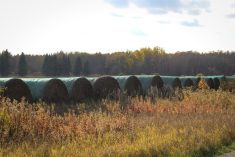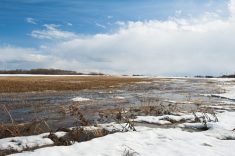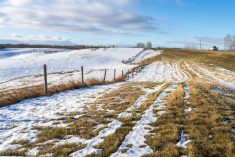Glacier FarmMedia — Varied rainfall across Manitoba left many areas of the province still in need of precipitation, with accumulations at 60 per cent of normal in eastern, Interlake and northwestern regions, reported Manitoba Agriculture in its latest weekly crop report.
Showers were isolated during the week ended June 17, with rain levels ranging from 0 in many areas to the high of 15.6 mm in The Pas.
Provincially, winter wheat and fall rye growth was said to be good, with most advanced winter wheat heading and fall rye in late flowering. Earliest seeded spring cereals were in the stem elongation stage, while most corn fields ranged from V3 to V6.
Read Also

Brazil to reap record soy crop in 2025/2026, increase exports
Brazil’s Conab said the country will reap a record soybean crop of 177.6 million tons in the 2025/2026 harvest year, according to data released on Thursday.
Canola growth stages were wide ranging due to a long seeding window. Late seeded canola has emerged, while the earliest canola was bolting with the first flowers appearing. Flaxseed ranged from first leaves to the 10 true leaf stage, and sunflowers ranged from V4 to V10.
Field peas ranged from the five to 10 node stage, with the most advanced soybeans at the third trifoliate. Some iron deficiency chlorosis was present in soybeans.
Scattered showers in the Northwest region provided moisture to help dry pastures. Alfalfa has started to bloom, and some grasses have begun to head out. Most dairies have finished first cut, and a few beef producers have begun first cut. Anticipated yields range from normal to below average.
Most cattle are out on pasture. Pastures were holding for now, but dryness is a concern and “it is becoming increasingly evident that animals will need to be supplemented or removed from current grazing systems as the summer continues,” said Manitoba Agriculture.















